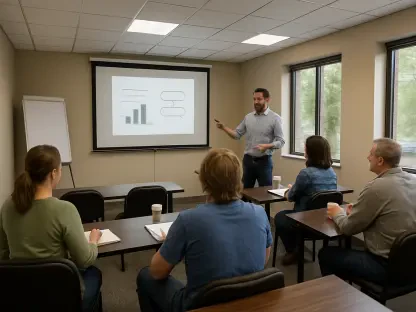Student disengagement in classrooms is a persistent challenge that affects both primary and secondary education systems. Recent comprehensive research conducted by the Australian Council for Educational Research (ACER), which included over 1,200 Australian students, has provided valuable insights into the underlying reasons for student disengagement. This study aimed to enhance teaching strategies and improve learning experiences by identifying the critical factors at play. The findings highlight a considerable drop in students’ self-perception as proficient learners as they transition from primary to secondary school, with only 18% of secondary students considering themselves proficient learners compared to 40% in primary school. This decline in student confidence correlates with feelings of demotivation, difficulties with challenging tasks, a sense of failure, and distractions in the learning environment. By delving into these influences on disengagement, we can develop effective strategies to counteract them and reengage students.
Understanding the Drop in Student Confidence
A significant revelation from the ACER study is the noticeable decline in the self-perception of being a ‘good learner’ as students move from primary to secondary school. This drop reveals itself starkly in the statistics: only 18% of secondary students see themselves as proficient learners compared to 40% of primary students. Understanding the reasons behind this decline is crucial in addressing disengagement. Factors such as feeling demotivated, encountering more complex and challenging work, and feeling unsuccessful often lead to students losing confidence in their abilities. Additionally, the presence of various distractions in their learning environments exacerbates this issue, making it harder for students to stay focused and engaged in class.
Students often view their educational journey as passive, with little control over their learning process. This perception leads to widespread disengagement behaviors such as ‘faking it,’ ‘zoning out,’ or thinking about unrelated things during lessons. These behaviors are commonly observed in both primary and secondary students, with secondary students sometimes resorting to more extreme forms of disengagement, like using headphones to mentally escape from the classroom environment. Recognizing these behaviors as symptoms of a deeper issue allows educators to tailor their interventions more effectively.
Traits and Conditions That Facilitate Engagement
While the study extensively explores disengagement, it equally emphasizes traits and conditions that can foster student engagement. Students who are engaged often report increased excitement, motivation, and inspiration when interacting with the content. Curiosity drives them to seek feedback and assistance actively, indicating a personal investment in their learning. Establishing meaningful connections with teachers and peers also plays a vital role in fostering an engaged learning environment. Students thrive when they experience fun and interesting lessons, feel safe and supported, and value the learning material. A strong belief in their capability to face and overcome challenges further fuels their motivation and enjoyment of the learning process.
Creating an environment that encourages active involvement and gives students a sense of control over their educational journey is paramount. Teachers can achieve this by designing lessons that are engaging and relatable, providing opportunities for students to explore their interests, and offering appropriate challenges tailored to individual skill levels. Such an environment not only supports students’ academic growth but also their emotional and social development, making them more resilient learners.
The Continuum of Learner Engagement
The concept of the Continuum of Learner Engagement, initially developed in 2020, has been referenced to capture student feedback better and gauge both engagement and disengagement. The revised model, encompassing new indicators identified through student responses, aims to present a more accurate portrayal of student experiences. Through this framework, educators can identify where students fall on the engagement spectrum and adjust their teaching strategies accordingly to support every student’s needs.
Students have suggested several strategies to improve engagement, emphasizing the importance of varied teaching methods. They express a need for teachers to exhibit enthusiasm, fairness, and allow them more autonomy in the learning process. A Year 8 student highlighted the desire for more significant challenges and opportunities to cultivate excitement and curiosity, which points to an often-overlooked potential beyond mere academic performance. Incorporating student feedback into curriculum design ensures that the learning experience is dynamic and student-centered.
The Complexity of Student Engagement
Research underscores the complexity of student engagement, distinguishing between engagement in schooling and engagement in learning. Passive disengagement, where students comply without truly investing in the learning process, remains a significant issue. It often goes unnoticed by teachers due to its non-disruptive nature, yet its consequences are equally detrimental as those of active disengagement. The study stresses that disengagement, regardless of its form, has profound negative implications on students’ academic and personal growth.
Dr. Berry, one of the researchers, shared her firsthand experience in dealing with disengaged students. She noted that engagement isn’t solely about academic performance but about active participation in the learning process. Without personal investment, students will continue to rely on teachers to keep them engaged. This dependency highlights the need for educational reforms that promote learner autonomy and intrinsic motivation. Teachers, therefore, must focus not only on delivering content but also on engaging students in ways that make learning a collaborative and active process.
Addressing the Needs of Vulnerable Students
Comprehensive research by the Australian Council for Educational Research (ACER), involving over 1,200 Australian students, has provided valuable insights into why students become disengaged. This study aimed to improve teaching strategies and enhance learning experiences by pinpointing critical factors. The findings reveal a significant drop in students’ self-perception as proficient learners as they move from primary to secondary school. While 40% of primary students view themselves as proficient learners, only 18% of secondary students do. This decline in confidence is linked to feelings of demotivation, struggles with challenging tasks, a sense of failure, and distractions in the learning environment. By understanding these factors contributing to disengagement, we can develop effective strategies to counter them and reengage students, ultimately leading to a more engaging and supportive educational experience.








